P0300
Symptom: The CHECK ENGINE lamp (MIL) is on or flashing. Uneven running when
misfiring. Any other diagnostic trouble codes.
Random misfiring in several cylinders
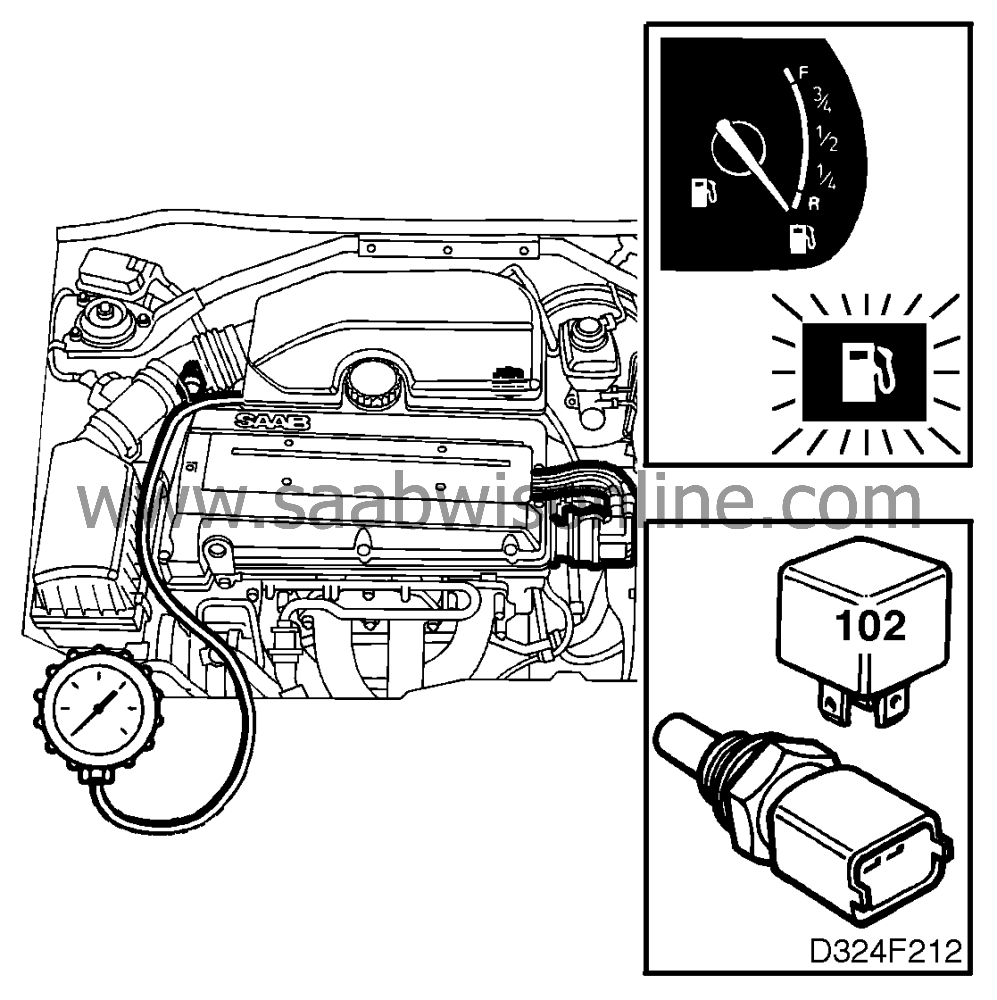
Fault symptoms
The CHECK ENGINE lamp (MIL) is on or flashing. Uneven running when
misfiring. Any other diagnostic trouble codes.
Conditions
During the course of each cylinder's power stroke the rotational speed of the
crankshaft increases temporarily. This gives rise to momentary increases in pulse frequency
from the crankshaft position sensor. These frequency changes are evaluated by the control
module and any misfiring is recorded.
How large a proportion of misfires is required for exhaust emissions to reach illegal
levels or for the catalytic converter to be damaged is specified in a load and rpm dependent
matrix in the control module's memory.
A diagnostic trouble code will be generated if the number of misfires exceeds the matrix
figure.
Diagnostic help
The cause of misfiring could be:
|
•
|
Low fuel level in the tank. If this is
the case, it will be indicated by diagnostic trouble code P1585 being generated;
|
|
•
|
fuel system malfunction; - continuously EVAP canister purge valve - defective
injectors - low fuel pressure;
|
|
•
|
ignition system malfunction: - defective or incorrect spark plugs - faulty HT
cables - faulty ignition coil - faulty distributor - faulty rotor;
|
|
•
|
basic engine malfunction: -poor compression
|
|
•
|
malfunction of common components: - pump relay - engine coolant temperature
sensor.
|
The cause of erroneously detected misfiring, diagnostic trouble code P0300
without misfiring, could be:
|
•
|
Malfunctioning of the rough road
sensor.
|
Check the wiring
Intermittent faults may occur as a result of temporary short circuits and breaks in the
wiring. Jiggle the wiring at several points and in different directions to ascertain whether the
wiring harness, including any connectors, is causing the trouble. Observe the multimeter,
ISAT scan tool or test lamp while doing this.
Diagnostic procedure
1. Check other Motronic 4.1 diagnostic trouble codes
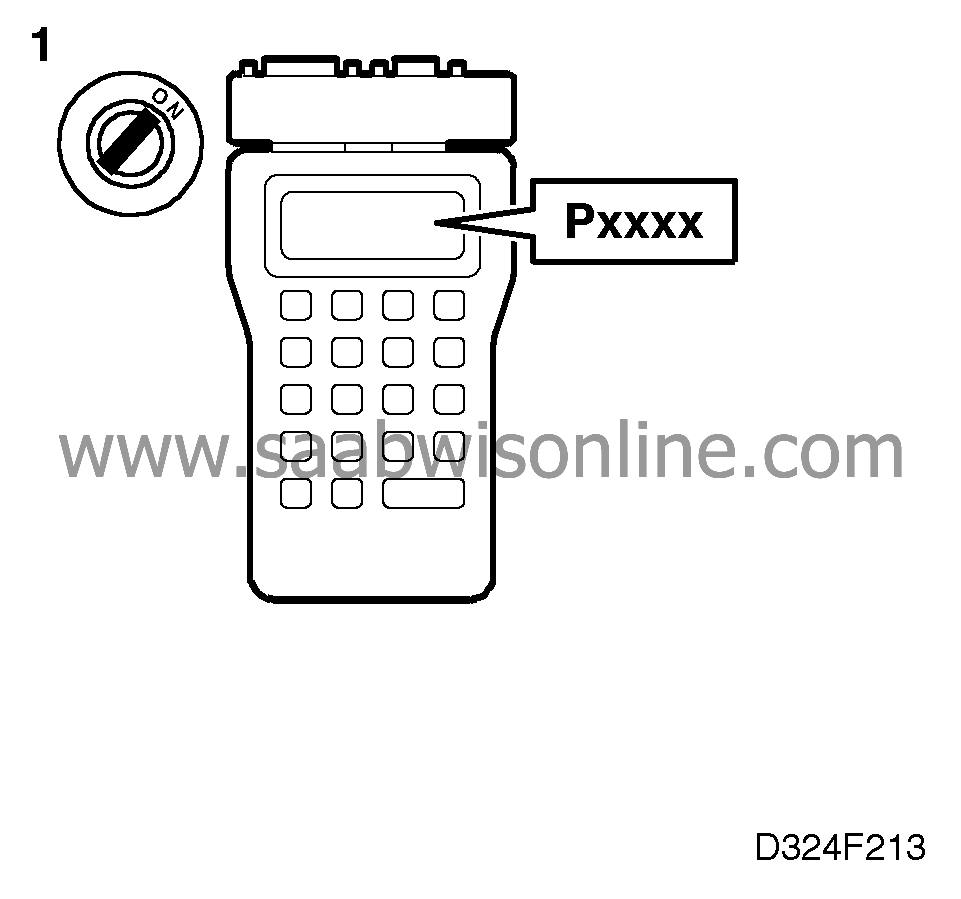
|
-
|
Use an ISAT scan tool to obtain
readouts of all diagnostic trouble codes.
|
Any other diagnostic trouble codes?
Continue fault diagnosis according to the diagnostic procedure for the relevant
diagnostic trouble code.
Continue with point 2.
2. Check the basic causes of the fault
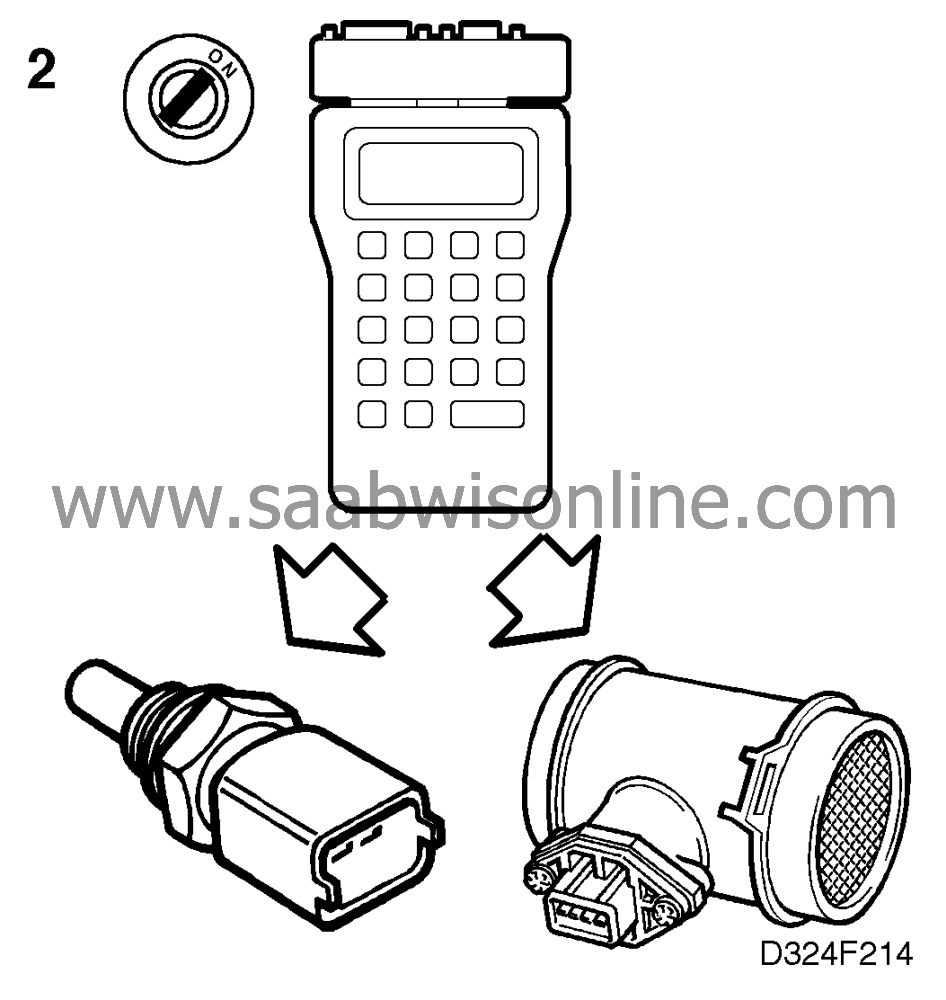
|
-
|
All electrical equipment should be
turned off (A/C, radiator fan, etc.).
|
|
-
|
Use the ISAT scan tool to check
that engine coolant temperature is plausible.
|
|
-
|
Check that the performance of the mass air flow sensor is plausible. The ISAT
scan tool should show the following air mass (V) as a function of engine
rpm:
|
Has a basic cause of the fault been found?
Rectify the fault. Continue with point 11.
Continue with point 3.
3. Check the HT cables
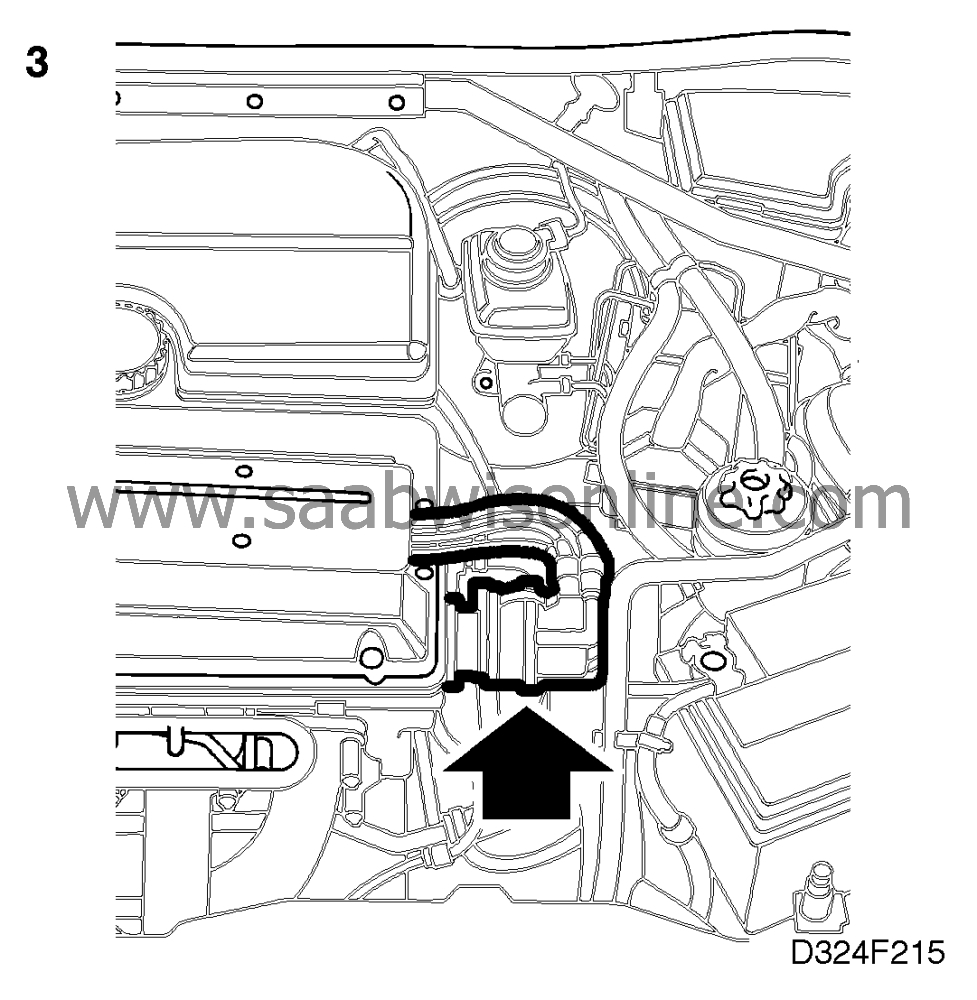
Are the HT cables OK?
Continue with point 4.
Rectify the fault. Continue with point 4.
4. Check the spark plugs
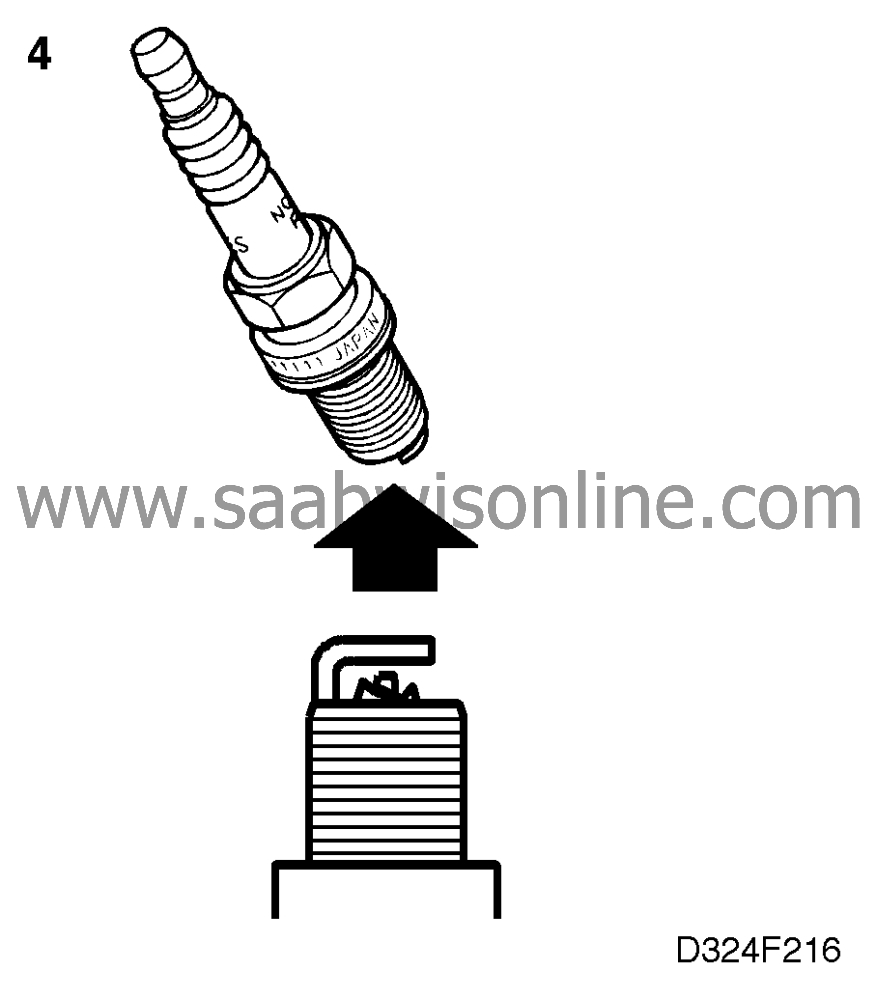
|
-
|
Remove the spark plugs and check
their condition visually.
|
|
-
|
Check that the electrode gap is not wider than 1.0 mm and that the spark plugs
are not obviously damaged.
|
Are the spark plugs OK?
Continue with point 5.
Change the spark plugs. Continue with point
9.
5. Check the performance of the ignition
coil
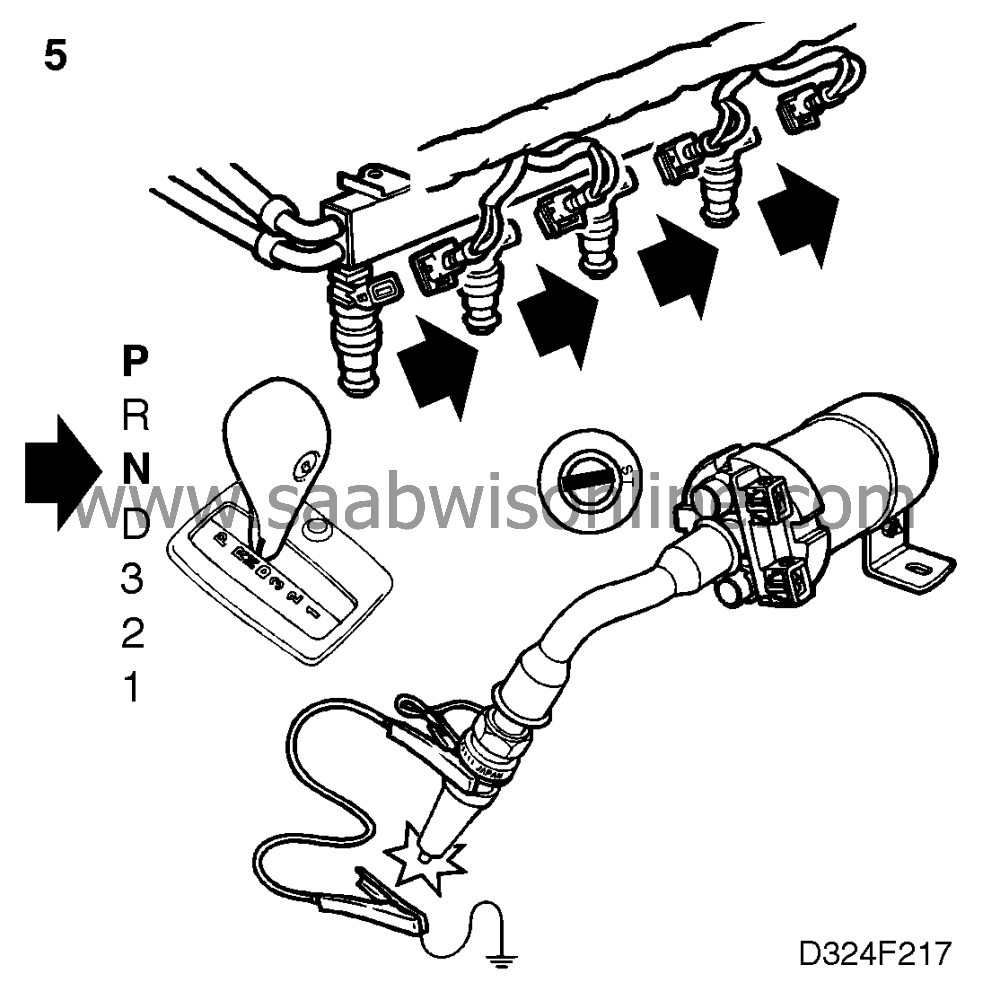
|
-
|
Unplug the injector
connectors.
|
|
-
|
Move the selector lever to position N.
|
|
-
|
Fit a test spark plug (part No. 86 11 386) to the HT cable from the ignition
coil.
|
Is a spark produced?
Continue with point 6.
Continue with point 8.
 Warning
Warning
|
|
The electronic ignition system generates charges of up to 40,000 volts. Such voltages
may prove fatal to persons with a weak heart or those who are fitted with a pacemaker.
Therefore, treat the ignition system with great respect and take all necessary
precautions.
|
|
|
|
|
|
6. Check the distributor
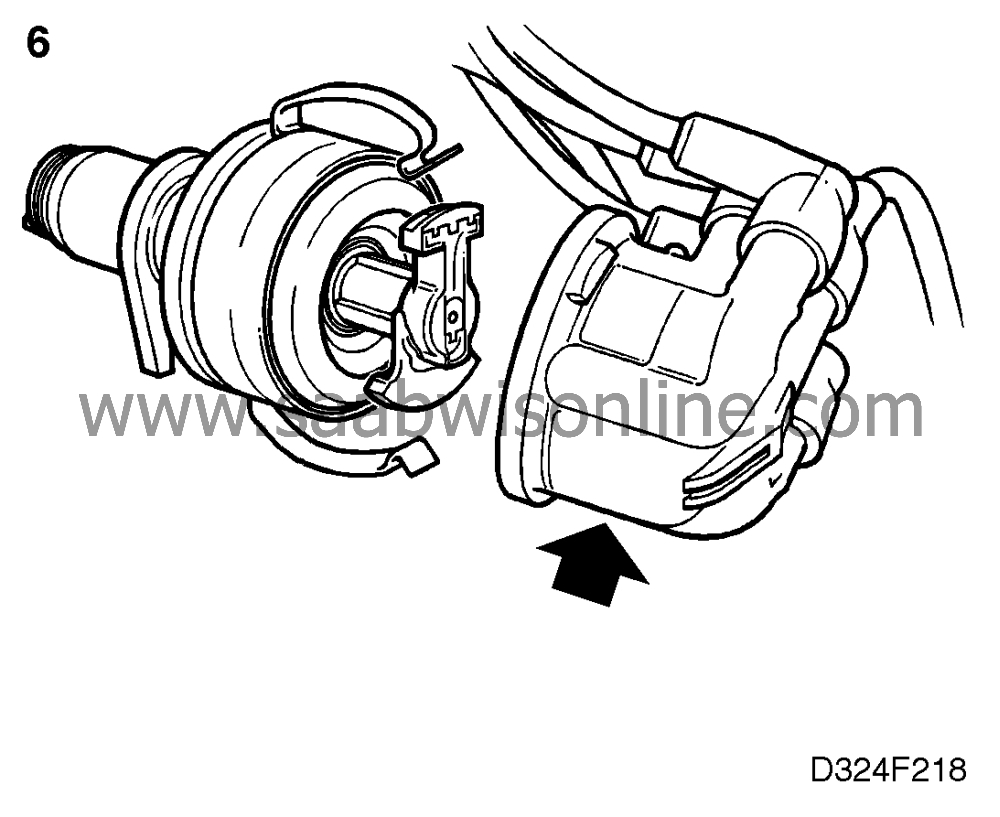
|
-
|
Check the distributor visually for
insulation trouble and damage.
|
Is the distributor OK?
Continue with point 7.
Change the defective component. Continue with point 11.
7. Check the HT leads between spark plugs and
distributor
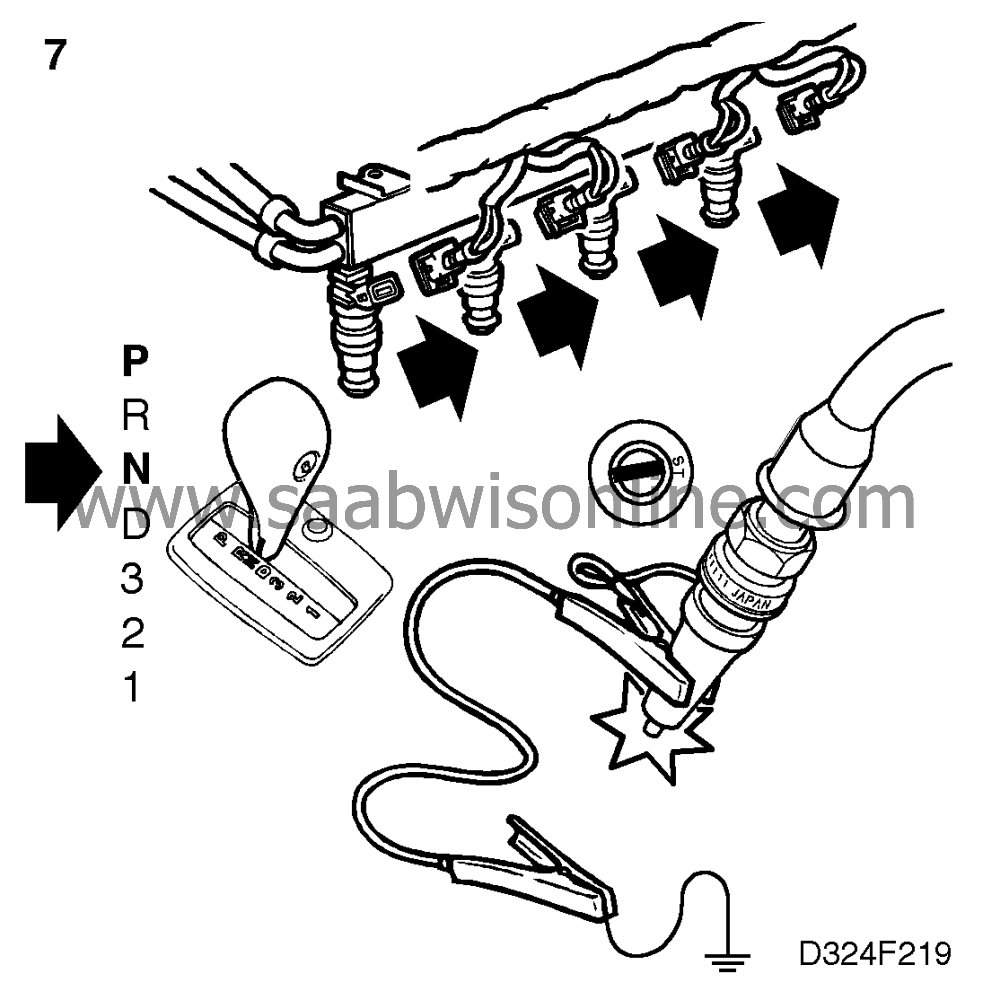
|
-
|
Move the selector lever to position
N.
|
|
-
|
Fit a test spark plug (part No. 86 11 386) in the relevant HT cable.
|
Are sparks produced by all spark plugs?
Change all spark plugs. Continue with point 8.
Change the HT lead concerned. Continue with point 11.
8. Check the wiring between ignition coil and control
module

|
-
|
Test for continuity and shorting
between pin 25 of the control module and pin 1 of the ignition
coil.
|
Is the wiring OK?
Continue with point 9.
Repair or replace the wiring. Continue with point 11.
9. Check the compression
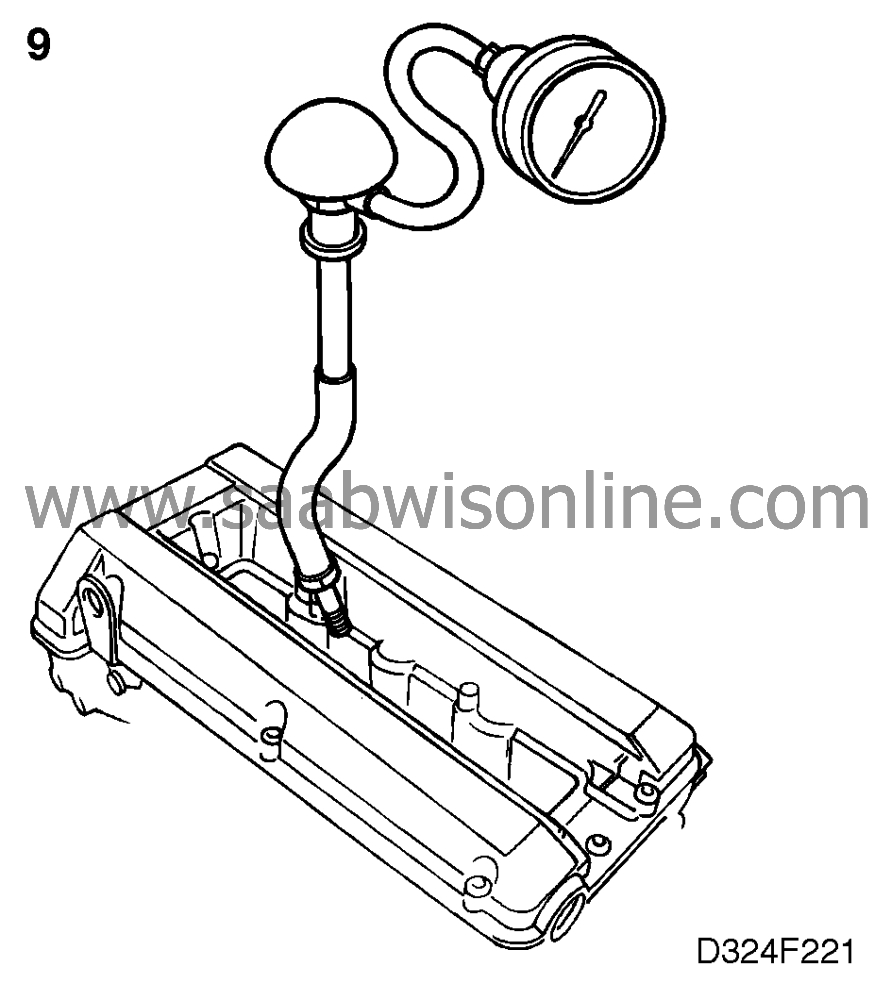
|
-
|
Carry out a compression test on
each cylinder.
|
Is the compression OK?
Change all spark plugs. Continue with point 10.
Continue fault diagnosis as described in Basic engine
 .
.
10. Check the fuel system
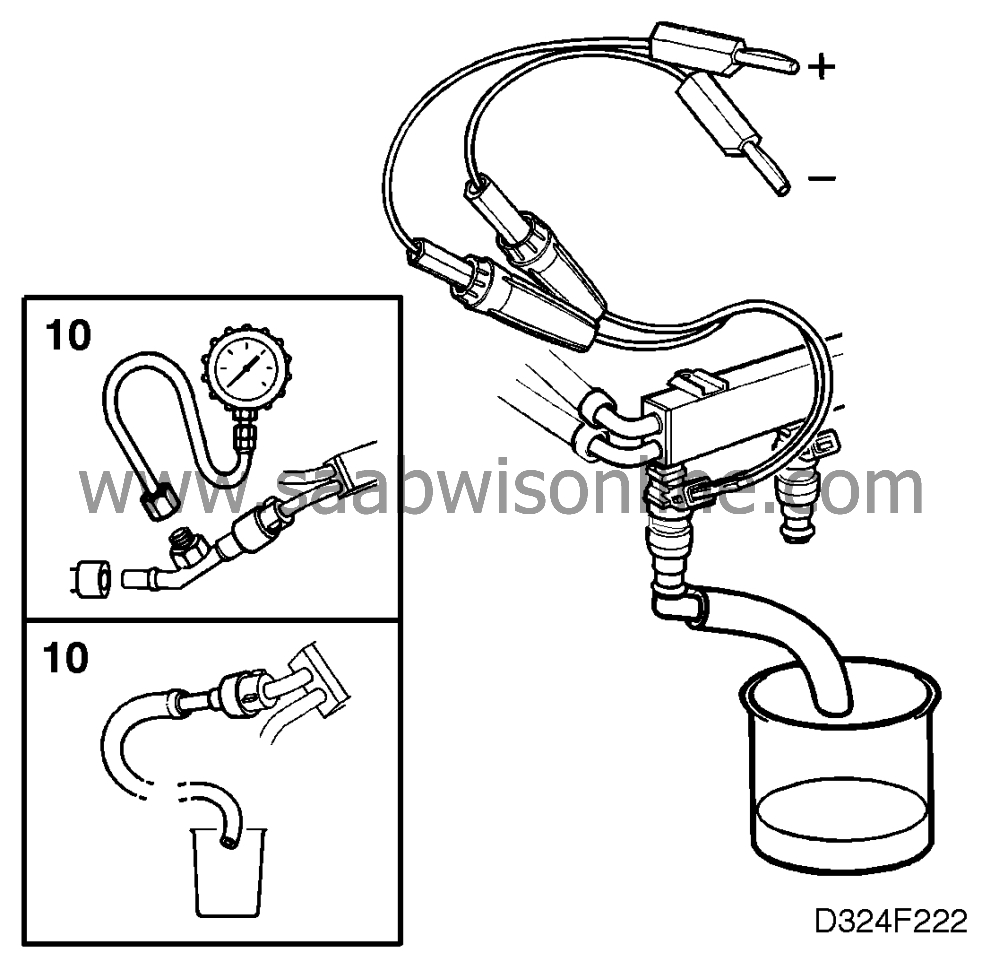
|
-
|
Take fuel pressure and fuel flow
readings on the fuel pump and all injectors.
|
Is the fuel system OK?
Continue with point 11.
Rectify the fault. Continue with point 11.
11. Final check
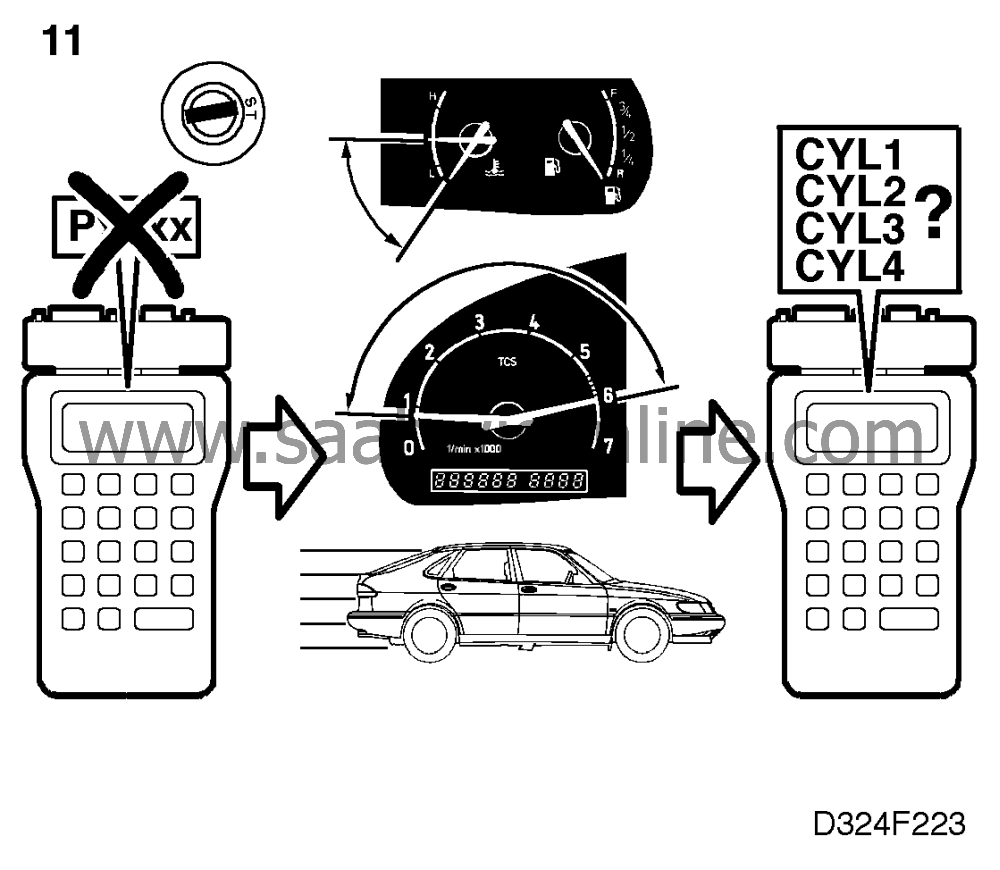
|
-
|
Clear the diagnostic trouble
code.
|
|
-
|
Implementation of driving cycle:
|
|
-
|
Select "MISFIRING CYLINDER 1".
|
Does misfiring occur?
Continue as described in
 .
.
The steps taken to rectify the fault were
correct.









 .
.




 Warning
Warning


